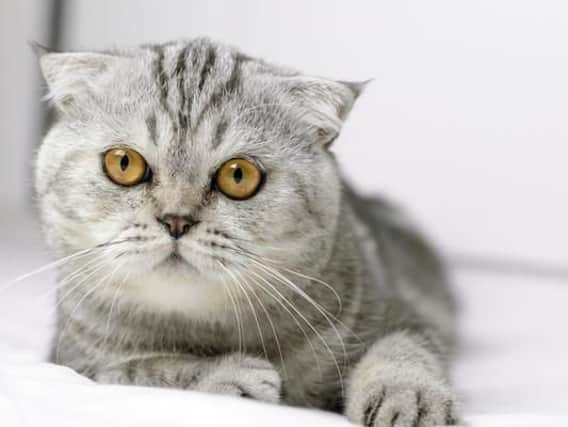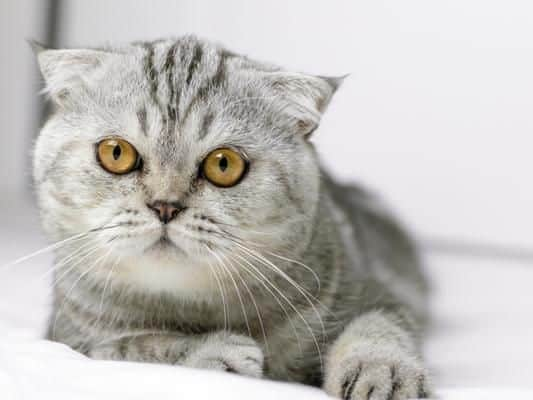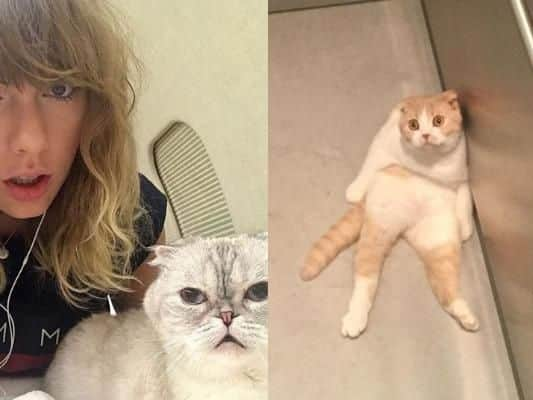Scottish fold cats: why the adorable breed is banned in Scotland but is huge in the US and Japan


The popular cat is considered to be cute thanks to its folded down ears, which lend its face an owl-like appearance, but the genetic defect can cause the animals to have short and painful lives.
Health concerns
The breed, which is also known as a Highland Fold, originated in Scotland in the 1960s and descended from a white barn cat named Susie, who was discovered living on a farm near Coupar Angus.


Advertisement
Hide AdAdvertisement
Hide AdSusie caught the eye of a local shepherd named William Ross who started a breeding programme, mating her litter of kittens with regular domestic and British Shorthair cats.
The breed was established as 'lop-eared' or 'lops', and was registered with the Governing Council of the Cat Fancy (GCCF), the UK's pedigree cat registry, in 1966.
However, the GCCF stopped registering folds in the 1970s over concerns about ear disorders and hearing problems, causing the breed’s popularity to fall in the UK.
The cats have a genetic mutation which affects cartilage throughout the body, causing the ears to fold down towards the front of the head and making them prone to severe health problems, including arthritis from an early age.


Why so popular?
The breed quickly gained huge popularity in the United States after being introduced in 1970, when three kittens from one of Susie's descendents were exported to a research centre in Massachusetts for a study of their mutations.
It is also popular in Japan. One of the most famous cats on the internet is a Scottish fold from Japan called Maru, whose videos have attracted more than 300 million views on YouTube.
The cute owl-like appearance of the cats has attracted the a number of celebrity owners, including singers Taylor Swift and Ed Sheeran, who regularly share photos of their pets on Instagram.
Other famous owners include actress Kirsten Dunst and Grey's Anatomy star, Patrick Dempsey.
Advertisement
Hide AdAdvertisement
Hide AdHowever, health fears have prompted the British Veterinary Association (BVA) to warn the breeding of Scottish fold cats should be banned.
Gudrun Ravetz, BVA senior vice president, said, "Everyone knows that the internet loves cat photos and videos.
"But as time passes we’ve noticed a growing appetite for novelty creeping in - with quirky and unusual cat breeds proving increasingly popular on social media.
“Currently the UK population of pure breed cats is very small as most cat owners opt for regular non-pedigree ‘moggies’.
"However, we are worried that the popularity on the internet of breeds with extreme conformation, such as the very flat-faced Persians and Exotic Shorthairs, or gene abnormalities such as what causes the ears to bend forward in the Scottish Fold breed, may prompt increased demand among consumers who are unaware of the potential serious health and welfare issues associated with such breeding.
“These figures show that many, many owners are choosing pets without understanding either the possible welfare implications of their extreme features or the potential cost of treating them.
"If you are considering getting a cat, discuss your plans with a vet who can advise you on how to get a healthy pet that is well-suited to your lifestyle.
"Avoid getting cats with extreme or unusual features and choose a healthier breed or a non-pedigree cat instead.”
Advertisement
Hide AdAdvertisement
Hide AdThe GCCF has maintained its ban on the breed since the 1970s on health grounds, although it can be registered with other organisations in Britain and around the world.
The Scottish Government recently closed consultation on new legislation regarding designer dog and cat breeding, which could outlaw a number of pets under new licensing regulations.
Responses are currently being considered ahead of any decision is to be made.